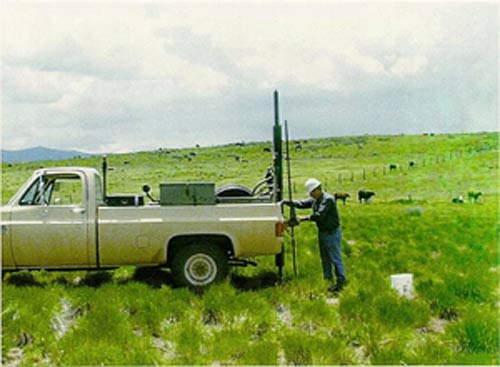Soil testing is one step in the design and construction process, and it’s something that many of our clients are a little puzzled by. After all, aren’t our houses built in a fairly standard way? Don’t we already know what kind of soil is generally found in the Melbourne area in advance of beginning a house and land package or new home construction? The answer is yes, in general, but not for each specific site. The fact is, the soil profile can vary quite a bit from place to place and each site needs to be checked for stability and soil bearing capacity.
Soil Testing and Structural Design
The first thing a structural engineer asks when they start a new project is ‘Where’s the soil report?’ Why? Because the soil report will have the information they need to design the foundation of the building. The job of the foundation is to take the weight of the building and its contents and distribute it over enough area so that there won’t be a problem with settlement or other types of instability.
The key piece of information needed for a foundation design is the soil bearing capacity. That will tell us the weight that the soil can support per unit area. The soil needs to be able to support the building, and the footings are the part of the building that’s just above the soil. If the soil bearing capacity is low, then the footings will have to be wide. If the soil has a large bearing capacity, then the footings can be narrower. If the soil is unstable, then the footings may have to be placed deeper into the ground, or a different type of foundation may need to be used.
Soil Testing Requirements in Victoria
In Victoria, soil tests are required for all new buildings. Without a soil report, the local authority will not grant a building permit. The stability of the soil is graded by class, and soils other than class A — ‘stable, non-reactive’ — may require a few changes to the standard design, or even a foundation design by a fully qualified structural engineer.
The two main culprits are clay and silt. Clay is an extremely fine soil, and silt is even finer. Both of them become slippery and unstable when they get wet. They also change volume when they absorb moisture, and that can cause temporary heaving in the soil. You can imagine that these aren’t ideal conditions underneath a house. When a home is built on a property with a significant amount of clay or silt, it may have to be carefully sited and the foundation design may need to be adjusted.
A special foundation design may also be needed if the site is found to be above old mine shafts, on unstable coastal land, or in a very damp, swampy area. For more information about the soil classifications, refer to build.com.au’s article, Soil Testing and Geotechnical Reports.
How is a Soil Test Performed?
Soil tests are performed by teams of geotechnical engineers. They use a special piece of equipment to drill down into the ground and extract cylinders of soil. The soil samples may extend a couple of metres below grade. Once they have investigated various parts of the site, they will analyse the results and determine what kind of soil is at various depths. Based on that, they’ll be able to classify the site and determine the bearing capacity of the soil.

A Direct Push Soil Sampler
You may find out some interesting things about your property by looking at the soil report; at Mimosa Homes, we suggest giving it a read.
Mimosa Homes is rated 4.7 stars by 8 customers.


